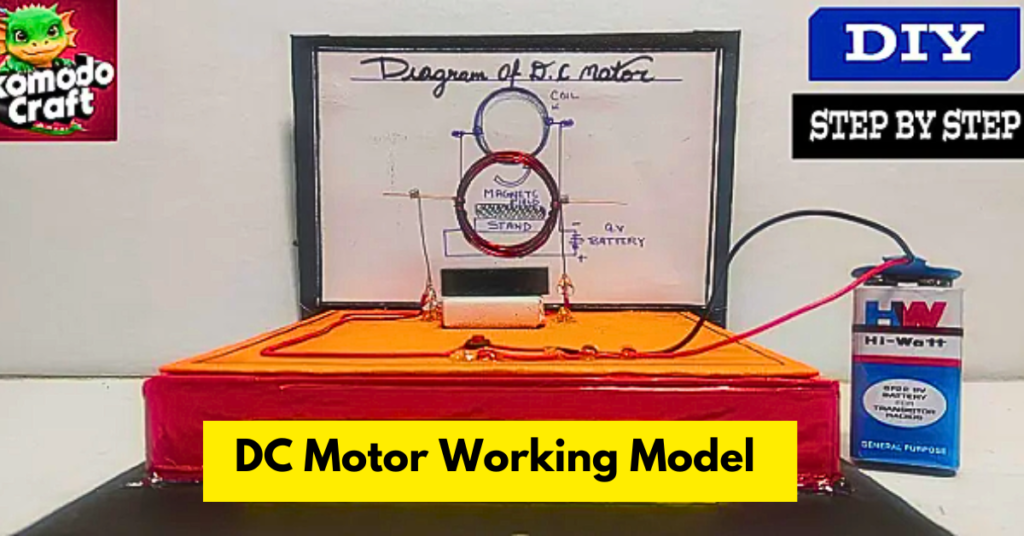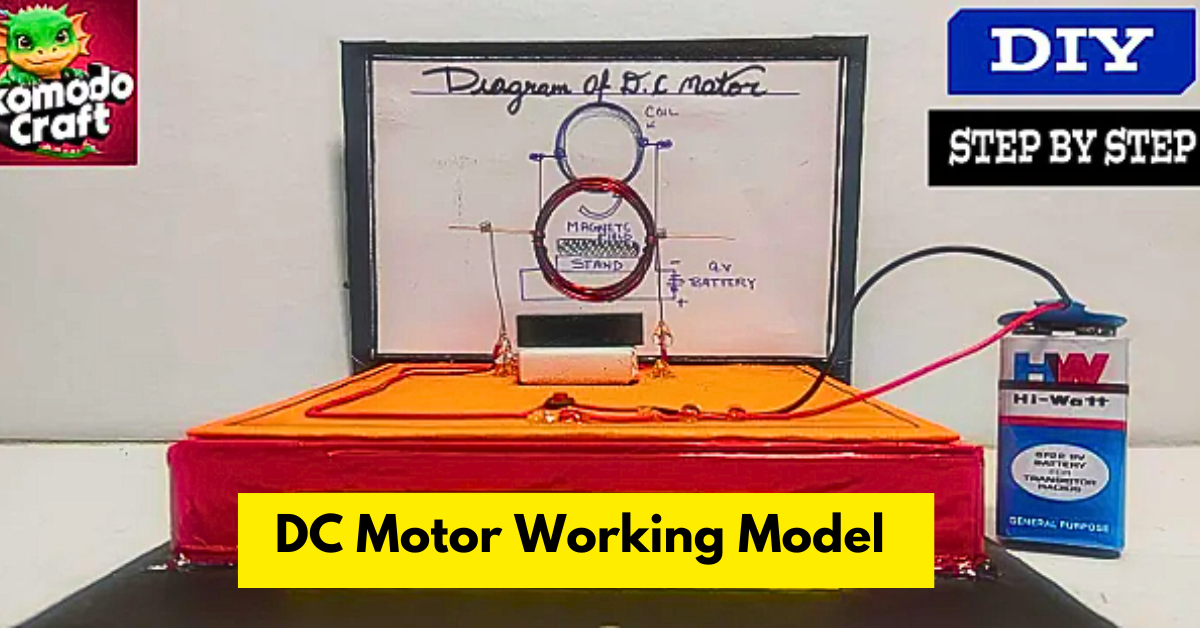Creating a DC motor working model is an exciting way to learn about the principles of electricity and magnetism. It’s a simple yet fascinating science project that demonstrates how electrical energy is converted into mechanical energy.
Materials: Dc Motor working model
- A small magnet
- Copper coil
- Battery connector
- ON/OFF Switch
- Stand
- A 9V battery
- Cardboard
- Tape or glue
What Is a DC Motor?
A DC motor is a device that uses direct current (DC) electricity to produce rotational motion. It works on the principle of electromagnetism: when electricity flows through a coil of wire, it creates a magnetic field that interacts with a fixed magnet, causing motion.
Steps to Make DC Motor Working Model
Step 1: Make the Copper (Coil)
- Take the enamel-coated copper wire and wrap it around a cylindrical object (like a marker or pen) about 15–20 times to create a coil.
- Leave about 2 inches of wire free on each end, and carefully slide the coil off the marker.
- Secure the coil by twisting the free ends of the wire together. This will form the “arms” of your armature.
Step 2: Prepare the Ends of the Wire
- Use the sandpaper to remove the enamel coating from only one side of each arm of the wire. This ensures the coil gets interrupted current, making it spin properly.
- Be careful not to scrape off too much; you want one side of the wire to remain coated.
Step 3: Create the Support Stand
- Straighten the safety pins or paper clips and bend them into a “U” shape.
- Attach these stands to the cardboard or wooden base using rubber bands or electrical tape.
- Ensure the ends of the safety pins or paper clips are positioned so they can hold the coil horizontally.
Step 4: Attach the Magnet
- Place the magnet under the coil on the base. Make sure it is directly below where the coil will spin.
- Secure the magnet using glue or tape.
Step 5: Connect the Battery
- Use rubber bands or electrical tape to attach the battery to the base.
- Connect the free ends of the safety pins or paper clips to the battery terminals (one to the positive and the other to the negative) to complete the circuit.
Step 6: Test Your DC Motor
- Carefully place the coil on the safety pins or paper clips, ensuring the scraped sides of the wire touch the metal supports.
- Once the connection is made, the coil should start spinning due to the magnetic field interacting with the current in the coil.
Top 10 Science Projects for School
How It Works
- Electricity: The battery sends direct current through the coil of wire.
- Magnetism: The current creates a magnetic field around the coil.
- Interaction: The coil’s magnetic field interacts with the field of the permanent magnet, causing the coil to spin.
Tips for Success

- Ensure the coil is balanced properly to spin freely.
- If the motor doesn’t spin, check the sanded ends of the wire—they must make proper contact with the supports.
- Use a strong magnet for better performance.
Why This Project Is Awesome
- Educational: It demonstrates core physics principles like electromagnetism.
- Interactive: You can modify the setup to see how changes affect performance.
- Impressive: It’s a working model that shows real-world applications of electricity.
By following these steps, you’ll have a fully functional DC motor model that’s sure to impress your classmates and teachers. Good luck, and enjoy building your science project! 😊
Dc motor working model for school project class 12?
Creating a DC motor working model is an exciting way to learn about the principles of electricity and magnetism by komodo craft. Read full Article for step by step process.

It is actually a great and useful piece of info. I am glad that you shared this useful information with us. Please stay us up to date like this. Thanks for sharing.